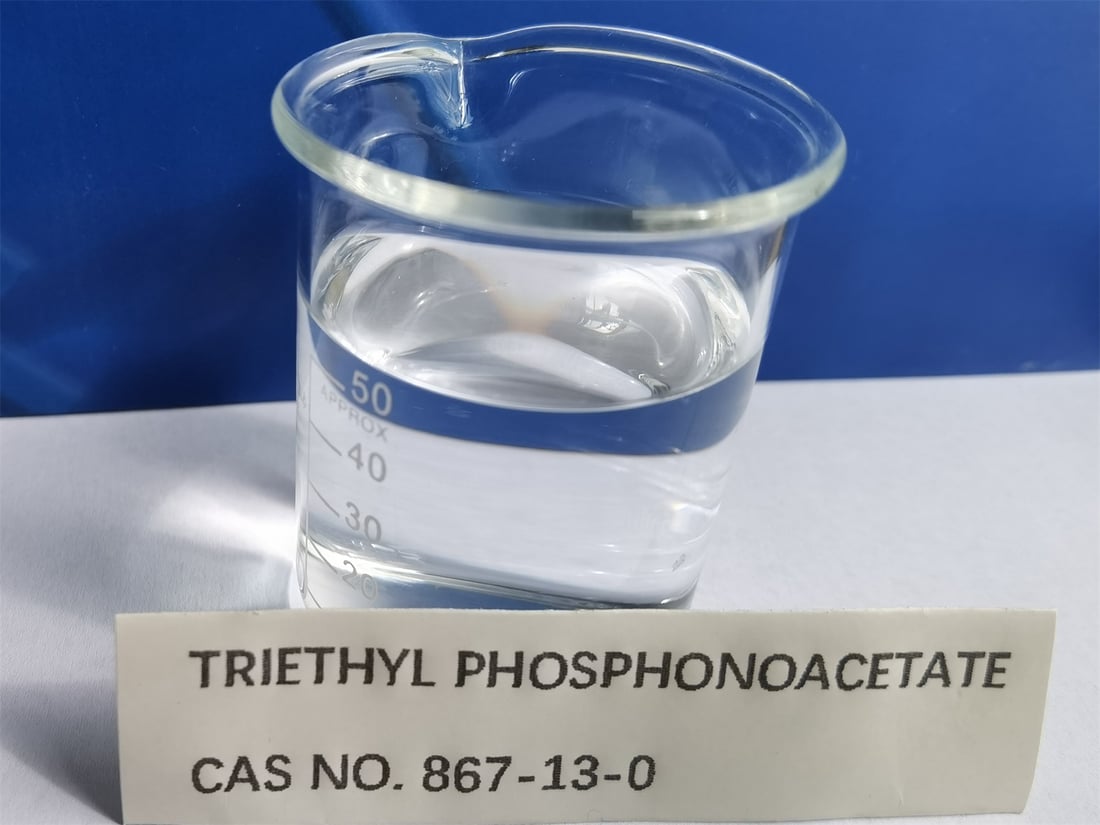Introduction
Triethyl phosphonoacetate (CAS No. 867-13-0) is a chemical compound that finds various applications in the fields of pharmaceuticals, agrochemicals, and organic synthesis. This informative article aims to provide a comprehensive guide to Triethyl phosphonoacetate, exploring its properties, uses, and potential benefits.
Chemical Properties
Triethyl phosphonoacetate is an organic compound with the molecular formula C8H15O4P and a molar mass of 206.18 g/mol. It appears as a clear, colorless liquid with a fruity odor. The compound has a boiling point of 185-186 °C and a melting point of -54 °C. It is soluble in organic solvents like ethanol, acetone, and benzene, but insoluble in water.
Applications in Pharmaceuticals
In the pharmaceutical industry, Triethyl phosphonoacetate serves as a valuable intermediate for the synthesis of various drugs. It is commonly used in the production of antiviral and anti-inflammatory agents. Its versatile nature allows chemists to introduce phosphonate moieties into drug molecules, enhancing their biological activity and stability.
Role in Agrochemicals
Triethyl phosphonoacetate also plays a significant role in the development of agrochemicals. It is widely utilized in the synthesis of herbicides, fungicides, and plant growth regulators. By incorporating phosphonate groups, these compounds exhibit improved efficiency and selectivity, contributing to sustainable agricultural practices.
Organic Synthesis Applications
Triethyl phosphonoacetate finds extensive use in organic synthesis as a versatile reagent. It can be employed in various reactions, including the Horner-Wadsworth-Emmons reaction, Michael addition, and aldol condensation. Its ability to introduce phosphonate functionalities makes it a valuable tool for the construction of complex organic molecules.
Safety Considerations
When working with Triethyl phosphonoacetate, it is important to prioritize safety. The compound should be handled in a well-ventilated area, and appropriate personal protective equipment, such as gloves and goggles, should be worn. It is also crucial to avoid inhalation and direct contact with the skin or eyes. In case of accidental exposure, immediate medical attention should be sought.
Storage and Handling
To ensure the stability and longevity of Triethyl phosphonoacetate, proper storage and handling practices should be followed. The compound should be kept in a tightly sealed container, away from direct sunlight and sources of heat. Additionally, it should be stored separately from oxidizing agents and strong acids to prevent any potential reactions.
Environmental Impact
Triethyl phosphonoacetate is considered to have low to moderate toxicity to aquatic organisms. It is important to prevent its release into the environment, as it may have harmful effects on aquatic ecosystems. Proper disposal methods should be implemented, following local regulations and guidelines, to minimize any potential environmental impact.
Regulatory Status
Triethyl phosphonoacetate is not listed as a hazardous substance by major regulatory bodies such as the United States Environmental Protection Agency (EPA) or the European Chemicals Agency (ECHA). However, it is essential to consult the specific regulations of each region or country before using or transporting the compound.
Conclusion
Triethyl phosphonoacetate (CAS No. 867-13-0) is a versatile compound with diverse applications in pharmaceuticals, agrochemicals, and organic synthesis. Its unique properties and ability to introduce phosphonate moieties make it a valuable tool for chemists. By understanding its chemical properties, applications, and safety considerations, researchers can harness the potential of Triethyl phosphonoacetate for various scientific endeavors.

